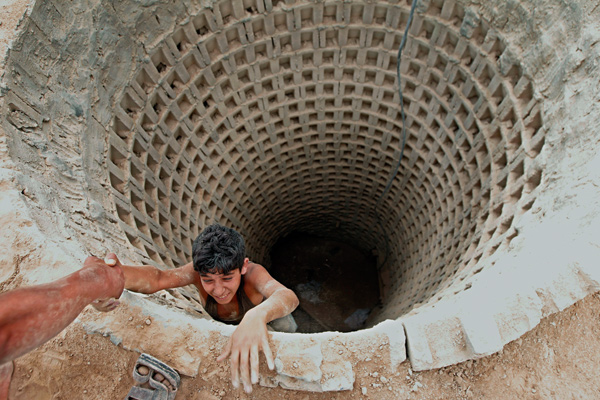Imagine a piece of land: sandy, roughly rectangular, and about the size of the Isle of Wight. It is surrounded on three sides by desert and hostile neighbours, and on the fourth by the sea. Although almost 1.7 million live in this space, nothing except essentials is allowed in or out. It’s under blockade. By sea, even its fishing boats are sprayed with sewage or gunfire and, around its land border, there’s a ‘free-fire zone’ a kilometre wide. Meanwhile, its buildings have been so enthusiastically shelled that, sometimes, whole ceilings just suddenly give way. Although this dystopia isn’t part of anywhere else, it’s not — officially — a country either. Even its name sounds utterly ravaged. This is the Gaza Strip.
For the Palestinians who live here, it’s been a cruel century. Much of it has been spent under military rule. After the Ottomans came the British (1920), the Egyptians (1949), the Israelis (1967), and then, eventually, Hamas (2006). Since then, the Gazans have been caught in the middle, home-made rockets going one way and the full might of Israel pouring in from the other. In the most punishing assault, in 2009, the Israelis killed about 1,400 people, and left even the most basic facilities utterly smashed. After that, the shelling was intermittent; buildings suddenly exploding or young men vaporised out in the fields. Worse, there was no escape. To leave the Strip, Gazans needed permission not only from the obdurate Hamas but also from their most bitter enemies.
By mid-2011, it took some courage to visit Gaza. Fortunately for us, Dervla Murphy has that in spades. At the age of 80, she braved a truly psychopathic bureaucracy, 38°C heat, sinister militias, and rock-lobbing Salafists (not to mention the threat of shells) in order to bring us her account of this traumatised land, A Month by the Sea.







Comments
Join the debate for just £1 a month
Be part of the conversation with other Spectator readers by getting your first three months for £3.
UNLOCK ACCESS Just £1 a monthAlready a subscriber? Log in